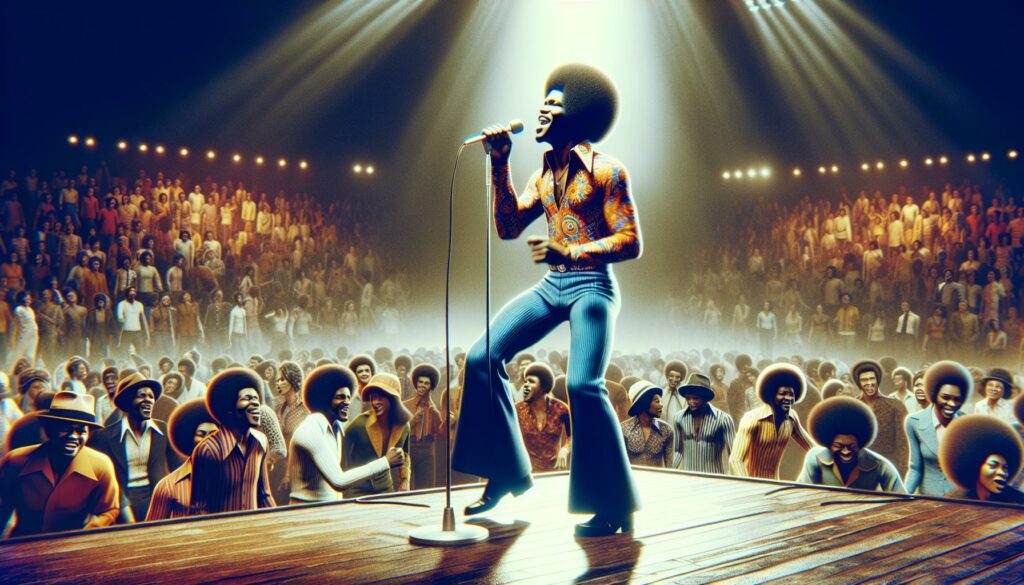As a lifelong music enthusiast I’ve always been captivated by the raw emotion and authentic power of classic soul music. From the smooth harmonies of The Temptations to the electric energy of James Brown this genre has shaped the foundation of modern music in ways we can’t ignore. When I think about soul music’s golden age of the 1960s and early 1970s I’m reminded of legendary record labels like Motown Stax and Atlantic. These powerhouses gave us timeless artists who poured their hearts into every note creating a sound that still resonates today. Through unforgettable hits like “”Respect”” “”I Heard It Through the Grapevine”” and “”Soul Man”” they’ve left an indelible mark on our musical landscape.
- Soul music emerged in the 1950s by blending gospel traditions with R&B, pioneered by artists like Ray Charles, Sam Cooke, and James Brown
- Record labels like Motown, Stax, and Atlantic shaped soul’s golden age (1960-1975) through distinct production styles and legendary artists
- Key musical elements include gospel-inspired vocals, horn sections, prominent bass lines, Hammond organ, and emotive delivery techniques
- Aretha Franklin and James Brown defined the genre through their iconic performances and chart-topping hits, earning numerous accolades and influencing generations
- Soul music played a crucial role in the Civil Rights Movement, with artists using their platform to address social justice and celebrate Black identity
- The genre’s influence continues today through sampling in hip-hop, neo-soul artists, and modern R&B production techniques
Classic Soul Music
Soul music emerged in the 1950s as African American artists blended sacred gospel traditions with secular rhythm and blues. I’ve traced the roots of this transformative genre through its earliest manifestations in churches black communities across America.
Evolution from Gospel and R&B
Gospel music’s call-and-response patterns spirituals hymns formed soul music’s foundation in three distinct ways:
- Incorporating church-style vocal runs melismas into secular lyrics
- Adapting piano organ arrangements from gospel to R&B settings
- Converting religious intensity into expressions of romantic secular love
The fusion crystallized in 1954 when Ray Charles transformed the gospel song “”I Got a Woman”” into an R&B hit combining:
| Gospel Elements | R&B Elements |
|---|---|
| Piano riffs | Blues structure |
| Call-response | Dance rhythms |
| Vocal intensity | Secular lyrics |
Early Soul Pioneers
Key artists established soul’s signature sound between 1955-1960:
- Sam Cooke transitioned from gospel quartet The Soul Stirrers to pop success with “”You Send Me””
- James Brown developed his explosive performing style at the Apollo Theater in Harlem
- Jackie Wilson brought his operatic range to hits like “”Lonely Teardrops””
- Ray Charles created the template for soul music with Atlantic Records recordings
| City | Notable Labels |
|---|---|
| Memphis | Stax Sun Records |
| Detroit | Motown Tamla |
| Chicago | Chess VeeJay |
The Golden Age of Soul
The period from 1960 to 1975 marks soul music’s most influential era, characterized by groundbreaking artists, innovative production techniques, and cultural transformation. Classic soul music reached its creative peak during this time, establishing distinct regional sounds and producing numerous chart-topping hits.
Motown’s Signature Sound
Detroit’s Motown Records created a polished, sophisticated sound that dominated the charts from 1961 to 1971. The label’s in-house band, the Funk Brothers, developed signature elements including pronounced bass lines, hand claps on the backbeat, prominent tambourine, and layered orchestration. Notable Motown hits showcase this refined approach:
| Year | Artist | Song | Peak Chart Position |
|---|---|---|---|
| 1964 | The Supremes | “”Where Did Our Love Go”” | #1 |
| 1965 | The Temptations | “”My Girl”” | #1 |
| 1966 | Four Tops | “”Reach Out I’ll Be There”” | #1 |
Stax Records and Southern Soul
Memphis-based Stax Records created a grittier, raw sound that contrasted sharply with Motown’s polish. The label’s house band, Booker T. & the M.G.’s, crafted arrangements featuring:
- Heavy horn sections with punchy brass riffs
- Blues-influenced guitar lines
- Gospel-tinged organ parts
- Prominent drum grooves
| Artist | Signature Song | Year | Notable Features |
|---|---|---|---|
| Otis Redding | “”Try a Little Tenderness”” | 1966 | Raw emotional delivery |
| Sam & Dave | “”Soul Man”” | 1967 | Call-and-response vocals |
| Wilson Pickett | “”In the Midnight Hour”” | 1965 | Driving rhythm section |
Iconic Soul Artists
The soul music landscape features legendary performers who defined the genre through their distinctive vocal styles, emotional delivery, and innovative performances. These artists created timeless classics that continue to influence modern music.
James Brown: The Godfather of Soul
James Brown revolutionized soul music with his dynamic stage presence and rhythmic innovations from 1956 to 1974. His signature hits “”Papa’s Got a Brand New Bag”” (1965) and “”Say It Loud – I’m Black and I’m Proud”” (1968) established the blueprint for funk music. Brown’s precise band leadership, characterized by strict musical discipline and intricate arrangements, produced 99 entries on Billboard’s R&B singles charts. His technique of emphasizing the first beat of each measure, known as “”the one,”” transformed rhythm patterns in popular music.
- “”Chain of Fools”” peaked at #1 on R&B charts in 1967
- “”Think”” showcased her gospel-trained vocals in 1968
- “”Natural Woman”” demonstrated her emotive storytelling in 1967
| Achievement | Number |
|---|---|
| Grammy Awards | 18 |
| Billboard Charted Singles | 112 |
| #1 R&B Hits | 20 |
| Gold Records | 14 |
Defining Elements of Classic Soul
Classic soul music embodies distinctive characteristics that set it apart from other genres. These elements combine to create the genre’s signature emotional depth and musical complexity.
Vocal Techniques and Style
Soul vocalists employ specific techniques that define the genre’s expressive power. The foundation includes melismatic singing where multiple notes stretch across a single syllable creating emotional runs. Notable vocal elements include:
- Gospel-inspired call-and-response patterns between lead singers and backing vocals
- Raw emotional delivery with gritty textures like rasps screams groans
- Strategic use of falsetto to convey vulnerability or passion
- Improvisational ad-libs known as “”soul shouting””
- Precise control of dynamics ranging from whispers to powerful belting
- Horn sections featuring trumpets trombones saxophones
- Prominent bass lines that establish groove and movement
- Hammond B3 organ providing harmonic richness
- Guitar patterns mixing rhythm chords with blues-based fills
- Syncopated drum patterns emphasizing backbeats
- String orchestrations adding dramatic tension (particularly in Motown productions)
| Instrumental Element | Role in Soul Music | Notable Examples |
|---|---|---|
| Bass Lines | Foundational Groove | James Jamerson’s work with Motown |
| Horn Sections | Melodic Punctuation | Memphis Horns at Stax Records |
| Hammond Organ | Harmonic Support | Booker T. Jones recordings |
| Rhythm Guitar | Rhythmic Framework | Steve Cropper’s Stax sessions |
Soul Music’s Cultural Impact
Soul music transformed American society through its powerful messages of love, pride and social consciousness from 1960 to 1975. Its influence extended far beyond entertainment, serving as a cultural force that shaped attitudes and inspired change.
Civil Rights Movement Connection
Soul music became the soundtrack of the Civil Rights Movement, with artists using their platforms to address racial inequality and social justice. Songs like Sam Cooke’s “”A Change Is Gonna Come”” (1964) and Curtis Mayfield’s “”People Get Ready”” (1965) captured the spirit of the movement through their lyrics of hope and perseverance. The music fostered unity in African American communities by celebrating Black identity and pride, exemplified in James Brown’s “”Say It Loud – I’m Black and I’m Proud”” (1968). Motown Records broke racial barriers by marketing soul music to diverse audiences, helping integrate American popular culture through crossover hits like The Supremes’ “”Where Did Our Love Go”” (1964).
Influence on Modern Music
Soul music’s impact resonates in contemporary musical genres through distinctive vocal techniques and production methods. Modern R&B artists incorporate soul’s melismatic singing style, while hip-hop producers sample classic soul recordings for their rhythmic foundations. Notable examples include:
- Sampling soul breaks in hip-hop tracks, like Kanye West’s use of Curtis Mayfield’s “”Move On Up”” in “”Touch the Sky”” (2005)
- Neo-soul artists like Amy Winehouse drawing from the Motown sound in “”Back to Black”” (2006)
- Contemporary vocalists adopting soul techniques, as demonstrated in Adele’s “”Rolling in the Deep”” (2010)
| Element | Modern Application |
|---|---|
| Horn Sections | Mark Ronson’s productions |
| Bass Lines | Dua Lipa’s “”Levitating”” |
| Gospel Harmonies | Bruno Mars’s arrangements |
| Hammond Organ | John Legend’s recordings |
Classic soul music stands as more than just a genre – it’s a powerful testament to human emotion and cultural transformation. From its gospel roots to its golden age I’ve discovered that soul music’s influence reaches far beyond its era shaping everything we hear today.
As I reflect on the countless legendary artists hits and record labels that defined this remarkable period I’m reminded of soul music’s enduring legacy. It’s not just about the music; it’s about the movement the message and the magical moments that continue to captivate listeners across generations.
The soul music revolution of the ’60s and early ’70s wasn’t just about creating timeless tunes – it was about changing hearts minds and society itself. Those unforgettable melodies and meaningful messages still resonate showing us that great music truly is eternal.



